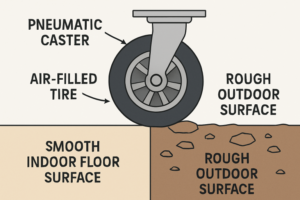A media wall is one of the most impressive and versatile modern design features you can integrate into a home, office, retail space, or entertainment venue. It is more than just a place to mount a television or display digital visuals; it is an architectural element that blends technology, aesthetics, and functionality to create a focal point. Whether you are planning to showcase art, display important business information, create an immersive entertainment experience, or simply elevate your living space, a media wall can completely transform how a room feels and functions.
This comprehensive guide will take you through every aspect of media walls — from their purpose and design concepts to technology types, installation tips, maintenance practices, and innovative uses. By the end of this article, you will have a clear understanding of how to create or choose the perfect media wall for your needs.
1. Understanding What a Media Wall Is
A media wall is essentially a wall — or a large wall-mounted structure — that incorporates multimedia display technology. While the most common form involves a large flat-screen TV or a video display, modern media walls can also feature multiple screens, LED panels, projectors, and integrated audio systems. The wall is often custom-designed to fit the space and may include shelving, lighting, and decorative elements to enhance both form and function.
Unlike a standard TV mounted on a wall, a media wall often becomes the central design feature of a room. It can serve multiple purposes:
- Entertainment Hub for watching films, streaming content, or gaming.
- Information Display in commercial environments for announcements, promotions, or schedules.
- Artistic Showcase for digital art, photography, or visual storytelling.
- Interactive Tool for presentations, education, and exhibitions.
What sets a media wall apart is the integration of technology with interior design. It’s not just about having a screen — it’s about creating an immersive and visually appealing environment.
2. Popular Settings for Media Walls
Media walls are versatile and adaptable to different environments. Let’s explore where they are most commonly found and why they are used in those settings.
a) Residential Spaces
In homes, media walls are often installed in living rooms, home theaters, or entertainment rooms. They can hold a large TV or projector screen surrounded by cabinetry, LED lighting, or even a fireplace. Homeowners choose media walls because they provide a neat, uncluttered look while hiding cables and organizing equipment.
b) Corporate Offices
In business environments, media walls are used for video conferencing, displaying company updates, or showcasing achievements. They create an impressive first impression in reception areas and serve as functional tools in boardrooms.
c) Retail Stores
Retailers use media walls to create immersive shopping experiences. They display promotional videos, highlight products, or create brand-centric environments that draw customers’ attention.
d) Event Venues
From concert stages to trade show booths, media walls play a key role in delivering dynamic visual content. They are often modular so that they can be assembled and dismantled quickly.
e) Public Spaces
Museums, airports, and sports arenas use media walls for wayfinding, announcements, or entertainment. The large, bright displays are easy to see from a distance and can communicate information effectively.
3. Types of Media Walls
The term “media wall” covers a broad spectrum of designs and technologies. The type you choose will depend on your purpose, budget, and space.
a) LED Video Walls
These use multiple LED panels seamlessly joined together to create one large display. LED walls are bright, high-resolution, and can be scaled to any size. They are ideal for large venues, outdoor advertising, and high-impact visuals.
b) LCD Video Walls
Similar to LED walls but made up of LCD screens. They are often more affordable and suitable for indoor settings where extreme brightness is not essential. Some have ultra-thin bezels to minimize the visible borders between screens.
c) Projection-Based Walls
A projector and a screen can create a large display area without heavy panels. This is useful for home theaters or temporary setups, although it may not match the brightness of LED or LCD walls.
d) Built-in Home Media Walls
These are custom carpentry or joinery projects designed around a central TV. They often include shelves, cabinets, fireplaces, and LED strip lighting for ambiance.
e) Interactive Media Walls
Equipped with touch-screen capability or motion sensors, these walls respond to user interaction. They are used in museums, trade shows, and educational environments to engage audiences.
4. Design Considerations for a Media Wall
Designing a media wall is both a creative and technical process. The goal is to blend technology into the overall style of the room while ensuring functionality and comfort.
a) Size and Scale
The display should match the size of the room. A massive LED wall in a small living room might overwhelm the space, while a tiny screen in a large conference hall will look inadequate.
b) Viewing Distance
For comfortable viewing, the size of the screen and the distance from the audience should be proportionate. A general guideline is that the ideal viewing distance is about 1.5 to 2.5 times the diagonal screen size.
c) Integration with Furniture
Cabinetry, shelving, and storage can be built around the media wall to hide equipment and create a polished look.
d) Cable Management
A clean appearance depends heavily on concealing wires and connectors. Many designs use hidden conduits or back panels.
e) Lighting
LED backlighting or spotlights can enhance the visual impact and reduce eye strain. Avoid direct glare on the screen from windows or lamps.
f) Style and Finish
Media walls can be minimalistic, rustic, industrial, or luxurious depending on materials like wood, stone, glass, or metal.
5. Technology Behind Media Walls
The technology in a media wall determines its performance and capabilities.
a) Resolution
Higher resolution provides sharper, more detailed images. For large walls, 4K is becoming a standard, while 8K is emerging for very large and high-end setups.
b) Brightness and Contrast
LED walls can achieve very high brightness levels, making them suitable for bright environments. Contrast ratio affects the depth and realism of images.
c) Refresh Rate
A higher refresh rate (such as 120Hz or more) ensures smoother motion, important for sports, gaming, or dynamic video content.
d) Connectivity
HDMI, DisplayPort, wireless casting, and network connections allow flexibility in content delivery. Commercial media walls often include content management systems for scheduling and controlling displays.
e) Audio Integration
While the focus is often on visuals, sound quality is equally important. Many media walls integrate soundbars, in-wall speakers, or surround sound systems.
6. Installation Process of a Media Wall
Installing a media wall can be straightforward or complex depending on the type chosen.
- Planning and Measurements – Accurate measurements are taken to ensure the wall fits the space perfectly.
- Structural Support – Heavy displays require strong mounting systems, sometimes reinforced with metal frames or wall studs.
- Electrical Work – Additional outlets, wiring for lighting, and cable routing are set up.
- Mounting and Alignment – Panels or the central screen are installed with precision to ensure level alignment.
- Integration of Components – Speakers, lights, and control systems are connected.
- Testing and Calibration – Brightness, sound levels, and color accuracy are adjusted.
- Finishing Touches – Decorative elements and covers are added for a complete look.
7. Benefits of a Media Wall
a) Aesthetic Appeal
Media-walls become a statement piece, giving a room a sleek and modern feel.
b) Functionality
They centralize entertainment or information, making it easy to access and enjoy content.
c) Space Efficiency
Built-in storage and cable management help reduce clutter.
d) Immersive Experience
Large, high-quality visuals with integrated sound create a cinema-like experience at home or a commanding presence in public spaces.
e) Versatility
The same wall can display movies, presentations, advertisements, or digital art depending on the need.
8. Maintenance and Longevity
Media-walls, especially those with multiple panels or advanced electronics, require care.
- Regular Cleaning – Dust screens and ventilation areas to prevent overheating.
- Software Updates – Keep any connected systems updated for security and performance.
- Visual Checks – Look for dead pixels or color inconsistencies.
- Component Replacement – Over time, LEDs or projectors may need parts replaced.
9. Trends in Media Wall Design
Technology and design trends are shaping the future of media-walls.
- Ultra-Thin Bezels – Minimizing visible borders for a seamless display.
- Curved Displays – For more immersive visuals.
- Modular Panels – Easier to transport and expand.
- Integration with Smart Homes – Control lighting, sound, and content through voice commands or apps.
- Sustainable Materials – Using eco-friendly finishes and energy-efficient screens.
10. Cost Factors
The price of a media-wall depends on:
- Size and resolution of the display.
- Type of technology (LED, LCD, projection).
- Custom cabinetry and finishes.
- Audio system integration.
- Professional installation charges.
While small home setups may be affordable, large commercial installations can represent a significant investment.
Conclusion
A media wall is far more than a piece of technology mounted on a wall — it is an architectural centerpiece that combines design and digital display to create a functional and visually stunning focal point. Whether for a home theater, a corporate boardroom, a retail store, or a public venue, a well-designed media wall can transform the way we experience information and entertainment. With careful planning, the right choice of technology, and professional installation, you can create a media that not only meets your needs but also elevates your environment for years to come.
ALSO READ: Bouncy Castle – Complete Guide to Fun, Safety, and Buying Tips
FAQs
1. What is the difference between a media wall and a regular TV setup?
A regular TV setup is simply a television placed or mounted in a space, often without integrated design features. A media wall, on the other hand, incorporates the TV or digital display into a custom-designed structure, often with cabinetry, lighting, and hidden cable management, creating a seamless and aesthetic focal point.
2. Can I install a media wall by myself?
For small home projects with basic carpentry skills, a DIY approach might be possible. However, for large displays, complex wiring, or heavy structural elements, professional installation is strongly recommended to ensure safety and functionality.
3. Are media walls only for large spaces?
No, media walls can be designed for any size of room. The key is to choose a display size and design scale that fits comfortably without overwhelming the space.
4. How long does a media wall last?
With proper care, high-quality media walls can last many years. LED panels, for example, can have lifespans exceeding 50,000 hours, while cabinetry and structural elements can last decades with minimal maintenance.
5. Can a media wall include a fireplace?
Yes, many home media walls combine a television with an electric or gas fireplace for a cozy yet modern look. Proper planning is required to ensure heat does not damage the electronics.









